What is the Family? Definition Essay
Introduction, critical analysis, reference list.
In the human perspective, a family is a group of persons connected by kinship, compassion, or sharing of residence. In a number of societies, the family is the basic unit for the socialization of children. A basic family unit is made up of a father, mother, and children, and is known as a nuclear family, however, this unit can be extended to include other relations to be known as an extended family.
The concept of the family has undergone a transformation and in today’s society, many people define the family structure as an arbitrary cultural set-up, a statement could be partially true. In ancient times, the family was a closely-knit, patriarchal clan consisting of a man, his wife or wives, and several children!
This has changed to include a monogamous parent taking care of the children. Besides, certain concepts of the family have broken with tradition within specific communities while some have been implanted through migration to thrive or else disappear in the new communities and societies.
Current debates and interest concerning the family have forced individuals to reassess themselves in a society driven by change and uncertainty. Because of its intricate nature, sociologists have not succeeded in coming with a universal definition of what family is and how is constructed. Rather, the definition is subject to individual interpretation and depends on the value a person attaches to being a member of a communal social group.
The aim of the paper is to give a concise definition of family, and the context of family structures such as the traditional family; single parent family, blended family and cohabiting relationship families. The paper also examines the influences that have progressively shaped the concept of family from the past to the present day.
A family is generally defined as a group of individuals who are linked by kinship or adoption, and who have a common residence. (Germov and Poole, 2011, 132). Kinship ties are connections or associations that link individuals through genealogy lines or marriage.
However, a few writers disagree with this concept. For instance, George Murdock, an American anthropologist, defines family as a social group that lives together, support each other economically, and raise children (Germov and Poole, 2011, 128).
In the mid 20 th century, sociologists defined family as a man living together with his wife and children, joined by blood, marriage or adoption. The couple had sex, procreated, and cared for the children jointly, besides bringing resources such as money and food together. The family members also guarded and supported each other.
Again, some writers have given a different perspective. Some asserted that previous definitions of the concept of the family should be altered as they are founded on ‘monolithic’ models that exhibit partiality towards a specific kind of family typified by gender discrimination and legal attachment, instead of gender fairness and patterns of care or emotional response.
Besides, modern reproductive methods have changed family associations and the definition of terms such as ‘mother’ and ‘father’ gas considerably changed. For instance, women past their menopausal age can now have children through surrogate mothers. Consequently, an increasing number of studies are focusing on what really defines a family. This perspective overlooks the gender inclination of the couple and the legitimacy of the relationship, and centers rather on the patterns of caring and affection.
The concept of the family has been conventionally related to the traditional family setup, which can be defined as a relationship in the children live with both the biological parents with the father often at work while the mother stays at home (Germov & Poole, 2011, 128). Today less than ten percent of families satisfies this principle.
The second approach is that of single parent setup in which the child resides with one of the parents, and may result from death, divorce, separation, out-of-wedlock pregnancy, or a nonunion pregnancy. Milstead and Perkins (2010, para. 8) recognized that teenage mothers were less likely to enter marriage and preferred to care for the child without paternal help leading to certain social and economic deficits for both the mother and child including lack of proper education, poorly paying occupations, reliance on welfare, and bad health for both of them.
The third approach is that of a blended family, in which the child lives with one of the biological parents, and that parent’s partner. This type of family may also include children born to the new couple. This family setup is made up of children, one of the biological parents, and a stepparent (Kinnear, 2010, 8). Even though the availability of another adult may lead to more material and financial resources, studies indicate that such children may be more disadvantaged than those living in stable single-parent families. In fact, children living in blended families have a higher likelihood of suffering emotionally and/or psychologically than those in single parent families.
The fourth perspective is that of a cohabiting relationship, in which a child lives with one of the biological parents, and that parent’s significant other, however, in contrast to blended families, the adults are not married. This type of family has been on the rise and a possible explanation could be that couples take it as a good practice before marriage. In contrast, Joltes (2007, para. 2) notes that those who have cohabited are more likely to divorce than those who have not. Cohabiting families regularly create less defined family roles, lower levels of parental support, supervision and involvement, and more conflicts (Kinnear, 2010, 8).
In contrast from the family setups described above, the traditional family is characterized by a unit comprising of a married couple with two or more children. In this setup, the male adult is the head of the house and the breadwinner too, while the female adult performs household tasks and cares for children and her husband.
Back then, the gender roles were clear. Most (preferably all) members of the family attended a church service weekly. Children were obedient, respectful and responsible. Families resided in the same town, or at least close to each other. Instances of divorce were an abomination and were very rare. Unmarried couples were uncommon too, and the act was thought of as shameful (Briggs, 2002, 5).
The number of unmarried adults was very low. The 1950s was a period when everybody worked together towards a common goal; society was stable or improving, and disagreements extremely rare. Women were satisfied with their housekeeping roles and respected their husbands as the house heads. Similarly, it was generally accepted that homosexuality, divorce, sex before marriage, abortion, and illegitimate birth did not exist, or occurred only to ‘bad’ families. Indeed, such issues were never conversed in an open forum.
For instance, women living in Australia in the 1950s had their lives centred on family and housekeeping tasks. Women who held wartime jobs were supposed to quit their jobs to create opportunities for men who had previously been in war. Consequently, women quit their jobs and returned to their housekeeping tasks. However, a few women challenged these norms and retained their jobs, but were paid less than men for similar jobs and were often given lowly paying jobs.
The practices in the traditional family have transformed significantly, and it is unlikely that we will ever switch back to the conventional nuclear family as the only ideal type of family. For the near future, the new family setup is here to stay. The ‘cereal packet’ image of the family comprising of the father, mother, and the children joyously having breakfast together is a bad reminder of how single-parent, blended, extended, same-sex, or childless families have considerably dented the idea of a perfect family.
Add this to the effects of the multiplicity of ethnic and cultural origins, aboriginal Australians and post-war migrations, and all Australians will finally encounter family forms quite dissimilar from their own. In Australia, as in many societies, the nuclear family setup is no longer conventional.
Towards the end of the 20th century, major demographic changes had affected even the family setup. Societies were aging while the number of children and youths was diminishing. These anomalies led to a shift in roles that today challenge the traditional family setup.
Today, families may comprise of couples who may be married or cohabiting, and have a child who is either a co-resident. A new form of family setup emerged in the 21st century, as mentioned by Anthony Giddens and Ulrich Beck. The two sociologists write that from the mid 70s onwards, significant changes occurred in family life and relationships; marriage rates were failing, divorce was on the increase, and fertility rates dropping. According to Saggers and Sims (2004, 34), these changes marked the end of the family.
While often referred to as a ‘haven in a heartless world’, the fact is that families cannot be insulated from the world of which we are a component. In fact, change in the family stricture has always been inherently linked to wider social changes. As society undergoes swift, turbulent and far-reaching changes in economic, cultural and political aspects, family keeps pace with the changes (Saggers and Sims, 2004, 32).
The family, as we once knew it, has undergone rapid transformations and is today a shadow of its former self. Previously unacceptable behaviors such as homosexuality and same-sex families are now welcomed in the family. Consequently, these unnatural acts have further deteriorated the family by causing same-sex families, which raises important sociological questions about the actual meaning of the term ‘family’.
Secondly, the rising number of women in the workforce has altered the basic roles of members of the family. Divorce and separation, once abhorred, is now a normal affair. Indeed, parental divorce disrupts the lives of almost one in five Australian children. Cohabiting has also found its way into the modern family, and this has resulted into a popular and often quoted belief that the Australian family is disintegrating.
While the social construct of the family has evolved to cater for the social pressures of modern life, the values attached to it are perhaps more enduring. While the concept of the family is multifaceted, perhaps it comes down to the individuals belonging to any particular family group, who seek the similar values of belonging and compassion that offer a true definition of what a family is.
Briggs, Freda. 2002. The changing family, from Children and Families : Australian Perspectives , Sydney: Allen & Unwin.
Joltes, Richard. 2007. Critical Enquiry: Family Values . Web.
Kinnear, Pamela. 2002. New families for changing times . Discussion Paper No 47. Web.
Milstead, Kayla & Perkins, Gerra. 2010. Family structure Characteristics and academic success: Supporting the work of school counsellors. Academic Leadership, Vol 8, issue 4. Web.
Poole, Marylin & Germov John. 2011. Public Sociology, An introduction to Australian Society , 2nd edition, Sydney: Allen & Unwin.
Saggers, Sherry and Sims, Margaret. 2004. Diversity: Beyond the nuclear family , Edited by Marilyn Poole, Sydney: Allen & Unwin.
- Chicago (A-D)
- Chicago (N-B)
IvyPanda. (2019, March 21). What is the Family? https://ivypanda.com/essays/what-is-the-family/
"What is the Family?" IvyPanda , 21 Mar. 2019, ivypanda.com/essays/what-is-the-family/.
IvyPanda . (2019) 'What is the Family'. 21 March.
IvyPanda . 2019. "What is the Family?" March 21, 2019. https://ivypanda.com/essays/what-is-the-family/.
1. IvyPanda . "What is the Family?" March 21, 2019. https://ivypanda.com/essays/what-is-the-family/.
Bibliography
IvyPanda . "What is the Family?" March 21, 2019. https://ivypanda.com/essays/what-is-the-family/.
- Familiy Changes
- The Definition of Marriage
- Cohabitation: Family Environment and Life
- Sociological View of Family
- Marriage and Alternative Family Arrangements
- Family Formations, Breakdowns and Re-formations
- The Discussion on the Institute of Family
- Critical Theories of Bodies, Genders, Sexualities and Identities

Essay about Family: What It Is and How to Nail It

Humans naturally seek belonging within families, finding comfort in knowing someone always cares. Yet, families can also stir up insecurities and mental health struggles.
Family dynamics continue to intrigue researchers across different fields. Every year, new studies explore how these relationships shape our minds and emotions.
In this article, our dissertation service will guide you through writing a family essay. You can also dive into our list of topics for inspiration and explore some standout examples to spark your creativity.
What is Family Essay
A family essay takes a close look at the bonds and experiences within families. It's a common academic assignment, especially in subjects like sociology, psychology, and literature.
.webp)
So, what's involved exactly? Simply put, it's an exploration of what family signifies to you. You might reflect on cherished family memories or contemplate the portrayal of families in various media.
What sets a family essay apart is its personal touch. It allows you to express your own thoughts and experiences. Moreover, it's versatile – you can analyze family dynamics, reminisce about family customs, or explore other facets of familial life.
If you're feeling uncertain about how to write an essay about family, don't worry; you can explore different perspectives and select topics that resonate with various aspects of family life.
Tips For Writing An Essay On Family Topics
A family essay typically follows a free-form style, unless specified otherwise, and adheres to the classic 5-paragraph structure. As you jot down your thoughts, aim to infuse your essay with inspiration and the essence of creative writing, unless your family essay topics lean towards complexity or science.
.webp)
Here are some easy-to-follow tips from our essay service experts:
- Focus on a Specific Aspect: Instead of a broad overview, delve into a specific angle that piques your interest, such as exploring how birth order influences sibling dynamics or examining the evolving role of grandparents in modern families.
- Share Personal Anecdotes: Start your family essay introduction with a personal touch by sharing stories from your own experiences. Whether it's about a favorite tradition, a special trip, or a tough time, these stories make your writing more interesting.
- Use Real-life Examples: Illustrate your points with concrete examples or anecdotes. Draw from sources like movies, books, historical events, or personal interviews to bring your ideas to life.
- Explore Cultural Diversity: Consider the diverse array of family structures across different cultures. Compare traditional values, extended family systems, or the unique hurdles faced by multicultural families.
- Take a Stance: Engage with contentious topics such as homeschooling, reproductive technologies, or governmental policies impacting families. Ensure your arguments are supported by solid evidence.
- Delve into Psychology: Explore the psychological underpinnings of family dynamics, touching on concepts like attachment theory, childhood trauma, or patterns of dysfunction within families.
- Emphasize Positivity: Share uplifting stories of families overcoming adversity or discuss strategies for nurturing strong, supportive family bonds.
- Offer Practical Solutions: Wrap up your essay by proposing actionable solutions to common family challenges, such as fostering better communication, achieving work-life balance, or advocating for family-friendly policies.
Family Essay Topics
When it comes to writing, essay topics about family are often considered easier because we're intimately familiar with our own families. The more you understand about your family dynamics, traditions, and experiences, the clearer your ideas become.
If you're feeling uninspired or unsure of where to start, don't worry! Below, we have compiled a list of good family essay topics to help get your creative juices flowing. Whether you're assigned this type of essay or simply want to explore the topic, these suggestions from our history essay writer are tailored to spark your imagination and prompt meaningful reflection on different aspects of family life.
So, take a moment to peruse the list. Choose the essay topics about family that resonate most with you. Then, dive in and start exploring your family's stories, traditions, and connections through your writing.
- Supporting Family Through Tough Times
- Staying Connected with Relatives
- Empathy and Compassion in Family Life
- Strengthening Bonds Through Family Gatherings
- Quality Time with Family: How Vital Is It?
- Navigating Family Relationships Across Generations
- Learning Kindness and Generosity in a Large Family
- Communication in Healthy Family Dynamics
- Forgiveness in Family Conflict Resolution
- Building Trust Among Extended Family
- Defining Family in Today's World
- Understanding Nuclear Family: Various Views and Cultural Differences
- Understanding Family Dynamics: Relationships Within the Family Unit
- What Defines a Family Member?
- Modernizing the Nuclear Family Concept
- Exploring Shared Beliefs Among Family Members
- Evolution of the Concept of Family Love Over Time
- Examining Family Expectations
- Modern Standards and the Idea of an Ideal Family
- Life Experiences and Perceptions of Family Life
- Genetics and Extended Family Connections
- Utilizing Family Trees for Ancestral Links
- The Role of Younger Siblings in Family Dynamics
- Tracing Family History Through Oral Tradition and Genealogy
- Tracing Family Values Through Your Family Tree
- Exploring Your Elder Sister's Legacy in the Family Tree
- Connecting Daily Habits to Family History
- Documenting and Preserving Your Family's Legacy
- Navigating Online Records and DNA Testing for Family History
- Tradition as a Tool for Family Resilience
- Involving Family in Daily Life to Maintain Traditions
- Creating New Traditions for a Small Family
- The Role of Traditions in Family Happiness
- Family Recipes and Bonding at House Parties
- Quality Time: The Secret Tradition for Family Happiness
- The Joy of Cousins Visiting for Christmas
- Including Family in Birthday Celebrations
- Balancing Traditions and Unconditional Love
- Building Family Bonds Through Traditions
Looking for Speedy Assistance With Your College Essays?
Reach out to our skilled writers, and they'll provide you with a top-notch paper that's sure to earn an A+ grade in record time!
Family Essay Example
For a better grasp of the essay on family, our team of skilled writers has crafted a great example. It looks into the subject matter, allowing you to explore and understand the intricacies involved in creating compelling family essays. So, check out our meticulously crafted sample to discover how to craft essays that are not only well-written but also thought-provoking and impactful.
Final Outlook
In wrapping up, let's remember: a family essay gives students a chance to showcase their academic skills and creativity by sharing personal stories. However, it's important to stick to academic standards when writing about these topics. We hope our list of topics sparked your creativity and got you on your way to a reflective journey. And if you hit a rough patch, you can just ask us to ' do my essay for me ' for top-notch results!
Having Trouble with Your Essay on the Family?
Our expert writers are committed to providing you with the best service possible in no time!
FAQs on Writing an Essay about Family
Family essays seem like something school children could be assigned at elementary schools, but family is no less important than climate change for our society today, and therefore it is one of the most central research themes.
Below you will find a list of frequently asked questions on family-related topics. Before you conduct research, scroll through them and find out how to write an essay about your family.
How to Write an Essay About Your Family History?
How to write an essay about a family member, how to write an essay about family and roots, how to write an essay about the importance of family.

Daniel Parker
is a seasoned educational writer focusing on scholarship guidance, research papers, and various forms of academic essays including reflective and narrative essays. His expertise also extends to detailed case studies. A scholar with a background in English Literature and Education, Daniel’s work on EssayPro blog aims to support students in achieving academic excellence and securing scholarships. His hobbies include reading classic literature and participating in academic forums.

is an expert in nursing and healthcare, with a strong background in history, law, and literature. Holding advanced degrees in nursing and public health, his analytical approach and comprehensive knowledge help students navigate complex topics. On EssayPro blog, Adam provides insightful articles on everything from historical analysis to the intricacies of healthcare policies. In his downtime, he enjoys historical documentaries and volunteering at local clinics.
Related Articles
%20(3).webp)
Development and Characteristics of the Modern Family
Cite this chapter.

- Gerard O’Donnell
Part of the book series: Macmillan Master Series ((MACMMA))
17 Accesses
Defining ‘a family’ is not so simple as most people might immediately assume; there are many forms of family. In British society a basic family usually consists of a man and woman who have a steady relationship with each other and who also have children; children are essential to the idea of ‘family’, but they need not necessarily be ‘consanguine’ — that is, related by blood to the adults with whom they live — although they usually are. A simple group of this kind is called a ‘nuclear’ family. Nearly all ‘nuclear’ families are related to one or more other nuclear families through parent-child relationships; mother will often have parents and brothers and sisters living and so will father. This family is called the ‘extended family’ and can include all known relations.
This is a preview of subscription content, log in via an institution to check access.
Access this chapter
Institutional subscriptions
Unable to display preview. Download preview PDF.
You can also search for this author in PubMed Google Scholar
Copyright information
© 1988 Gerard O’Donnell
About this chapter
O’Donnell, G. (1988). Development and Characteristics of the Modern Family. In: Mastering Sociology. Macmillan Master Series. Palgrave, London. https://doi.org/10.1007/978-1-349-10247-1_3
Download citation
DOI : https://doi.org/10.1007/978-1-349-10247-1_3
Publisher Name : Palgrave, London
Print ISBN : 978-1-349-10249-5
Online ISBN : 978-1-349-10247-1
eBook Packages : Palgrave Social & Cultural Studies Collection Social Sciences (R0)
Share this chapter
Anyone you share the following link with will be able to read this content:
Sorry, a shareable link is not currently available for this article.
Provided by the Springer Nature SharedIt content-sharing initiative
- Publish with us
Policies and ethics
- Find a journal
- Track your research
Essay on My Family for School Students and Children
500+ words essay on my family.
Families are an integral part of one’s life. It does not matter if you have a small or big family, as long as you have one. A family serves as the first school to the child where one learns about various things. The basic knowledge about one’s culture and identity comes from their family only. In other words, you are a reflection of your family. All the good habits and manners one has incorporated are from their family only. I feel very lucky to be born in a family which has made me a better person. In my opinion, families are an essential part of one’s being. In this essay on my family, I will tell you why family is important.

Why Families are Important?
Families are a blessing not everyone is fortunate enough to have. However, those who do, sometimes do not value this blessing. Some people spend time away from the family in order to become independent.
However, they do not realize its importance. Families are essential as they help in our growth. They develop us into becoming a complete person with an individual identity. Moreover, they give us a sense of security and a safe environment to flourish in.
You can read essay on my mother here .
We learn to socialize through our families only and develop our intellect. Studies show that people who live with their families tend to be happier than ones living alone. They act as your rock in times of trouble.
Families are the only ones who believe in you when the whole world doubts you. Similarly, when you are down and out, they are the first ones to cheer you up. Certainly, it is a true blessing to have a positive family by your side.
Get the huge list of more than 500 Essay Topics and Ideas
Pillars of Strength
My family has been always by my side in ups and downs. They have taught me how to be a better person. My family consists of four siblings and my parents. We also have a pet dog that is no less than our family.
Within each family member, lies my strength. My mother is my strength as I can always count on her when I need a shoulder to cry on. She believes in me more than any other person. She is the backbone of our family. My father is someone who will always hide away his troubles for the sake of his family.

In short, I will forever be indebted to my family for all they have done for me. I cannot imagine my life without them. They are my first teachers and my first friends.
They are responsible for creating a safe and secure environment for me at home. I can share everything with my family as they never judge one another. We believe in the power of love above everything and that drives us to help each other to become better human beings.

FAQs on Family
Q.1 Why are families important?
A.1 Families are important because they nurture and develop us. They make us happy and give us the chance to become better human beings. Families enhance your confidence and make you believe in yourself.
Q.2 How do families act as pillars of strength?
A.2 Families are the pillars of strength because they give us the courage to face the world. They are always there when we need them. Even in the loneliest of times, families make us feel better.
Customize your course in 30 seconds
Which class are you in.

- Travelling Essay
- Picnic Essay
- Our Country Essay
- My Parents Essay
- Essay on Favourite Personality
- Essay on Memorable Day of My Life
- Essay on Knowledge is Power
- Essay on Gurpurab
- Essay on My Favourite Season
- Essay on Types of Sports
Leave a Reply Cancel reply
Your email address will not be published. Required fields are marked *
Download the App

Talk to our experts
1800-120-456-456
- My Family Essay

Essay on My Family
A family is God’s greatest gift to all living beings on earth including human beings. A person without family and its love is never complete and happy. A family is one with whom you can share all your joys and sorrows. Family stands by you at the toughest situations in life. Family gives you the warmth and affection that you may not get anywhere else. I too am blessed with such a family. My family has always been my strength. My mother, father, sister and I complete my family.
My Mother
My mother is the strongest woman I have ever seen in my life. She is a super woman. She can manage everything at the same time so beautifully and confidently. She is a fine individual with poise and dignity. She is the pivot around whom our family revolves. She has raised us with important values in life. She explained to us the true essence of love and compassion. She also tells us the importance of spirituality. She has given utmost importance to our education. She coordinates with our teachers in school and helps us with our weaknesses. My mother is an amazing cook and takes care of what we like to eat. She’s just not a housewife. She is an entrepreneur too. She owns a restaurant managing a staff of 30 boys. It is indeed not an easy job but she manages everything very efficiently. She is an inspiration to all of us. She is indispensable to our family.
My father is a man of strong principles. His presence at home itself gives us a sense of security and hope. He is very gentle, disciplined and strict. He is a software engineer by qualification and works for a multinational company. Since the headquarters of his company is in The United States of America, he frequently needs to travel. I know he feels very sorry that he is not able to spend much time with us due to work pressure and travel but whenever he is at home he makes the best of it. He has a good sense of humor. He makes us laugh with his jokes and keeps telling us about his work experience. I get a lot of insight from it and clarity of what field I can take when I grow up. I have learnt a most important and valuable lesson from him that is being content in life with whatever I have. The atmosphere in our home becomes so cheerful and joyful when he is around. It gives a feeling of a complete family. He is a dutiful son towards his mother. Even though my grandmother doesn’t live with us, my father carries all his duties and responsibilities for her very diligently. I feel proud to be his son. I want to grow like him and take care of my parents the way he does.
My sister is three years older than me. She is a very soft and gentle girl. She is my best friend and a confidant. We fight on silly things but I know she really cares for me and loves me a lot. She always protects me from getting scolded by my mother. She is an artist and helps me with all my drawings. My sister supports and stands by me when seniors in my school bully me. I feel very secure around her when I am away from my parents.
To Conclude
My family has taught me to be a better person. I am blessed and fortunate enough to have such a wonderful family who has taught me important values in life. I am very grateful and I thank God for the most precious gift.
The childrens who live with a mother and a father are known as a small discern family. A couple in which more than two children reside is referred to as a huge discern family. And a family in which mother, father and youngsters, besides grandparents, uncles and aunts, a circle of relatives stays together is referred to as a joint family . My family is a small joint family. Apart from siblings, mother and father, grandparents also stay with us. Our family plays a crucial role within the making of any development. With the increase in the circle of relatives, India climbs the ladder of improvement. The country is formed by way of its own family and global fashion with the aid of nations. This is why it's far stated, “Vasudhaiva Kutumbakam” means the entire world is our circle of relatives. And it had superb importance in ancient India, which is slowly becoming extinct with time. A primary purpose for this is the conversion of the joint family into the unique circle of relatives.
Significance of Family in My Lifestyle
My own family, despite being a joint own family, is a happy family. And I am glad that I was born in this joint circle of relatives. wherein it became simplest through our own family that we had been able to study the critical things of existence in our children which we could rarely analyze thru books. each of my parents ' paintings in faculty. At some point during my stay at home, my siblings and I spoke many topics with our grandparents, which is quite exciting. Other than this, we also have one of our dogs, who is a part of our circle of relatives.
Family as Safety Clause
A family provides safety from outside evils and risks, that is, the man or woman is protected from all varieties of outside failures within their own family, in addition to the physical, mental and highbrow improvement of a character is due to the circle of relatives. The circle of relatives creates a secure environment for the kid and all our expectations and wishes are met via the family. My circle of relatives is a middle-class family, still my mother and father try their best to fulfill each of mine and my siblings wishes. The love from the circle of relatives towards me takes me closer to my family and helps me recognize my obligations in the direction of my own family. A person additionally will become a responsible citizen of society by the habit of spitting out his responsibilities. Every family individual faces hassle collectively during their difficult time.

Importance of Elders Inside the Family
A joint family in which our elders (grandparents, grandparents) stay with us, is the most important thing to focus on as they are not part of the authentic circle of relatives so that kids are deprived of understanding many critical beliefs and values. In advance, children used to play on time and additionally concentrate on the tales of grandparents, which gave them information, however the kids of the prevailing time use mobile from their adolescence to play. The authentic family has additionally taken away the kid’s formative years.
What the child will become inside is the destiny that depends totally on the child’s own family. With the help of the proper steerage, even a susceptible baby kisses is a brand new dimension of achievement inside the future. On the contrary, a brilliant student forgets his intention due to wrong steering and is left at the back of inside the race of life.

FAQs on My Family Essay
1. How can you Define a Family?
A family is a group of people who are related and live together in every situation. Family normally comprises mother, father, sister, brother, grand parents, uncles and aunts.
2. Why is Family Important?
Family is important to us because it gives us the warmth, love and affection that you may not get anywhere in the world. Family teaches the high moral values in life and makes you a better human being.
3. How does your father inspire you?
My father inspires me with his hard work, honesty and diligence. He is very loving and caring and binds the entire family together.
4. Why should you thank god for giving a family?
I thank God and am very grateful for the most precious gift of family because family members give unconditional love, care and affection. I am what I am because of my family. My family completes me.
I'm 38 and single, and I recently realized I want a child. I'm terrified I've missed my opportunity.
- I didn't want kids and didn't think I'd want to get married again after my divorce.
- But recently I realized I actually do want to build a life — and a family — with someone.
- I'm almost 39, and I'm starting to panic about whether my chance to have a child has passed.

I can still picture it. I was 20, sitting on the kitchen countertop with my legs dangling over the cabinets. He was 21, leaning against the stove of the home he hoped we'd share. We'd been dating for nearly two years and were at a standstill.
I was clinging to my dream of moving five hours away to attend the design program at the Art Institute of Seattle. He wanted a simple life with children and home-cooked meals in the little resort town of Coeur d'Alene, Idaho, where we met in sixth grade .
That day in the kitchen, we decided to stay together, and we each gave up something to do that. I would no longer pursue design school and the big-city life I'd always dreamed of, and he'd forgo having children and a wife who prioritized homemaking. I made it clear to him that I did not see motherhood in my future and that he needed to be OK with that. Two years later, we married.
My now ex-husband wanted kids and a stay-at-home wife
My husband thought I'd change, and I thought I could change for him. I told myself that it was silly to go after my dreams and that I should be content in the pretty mountain town where I grew up.
But I grew resentful when he asked where dinner was or complained that his gym clothes hadn't been washed. I did little to hide my disdain for our small-town life. He was a good and hardworking man, but I don't think I made him feel that way.
We were young, foolish, and sweet, thinking our love would allow us to overcome our differences. We were also very wrong.
Related stories
Shortly after I turned 30, we divorced . We were both tired of sacrificing the things that were important to us for each other.
I didn't think I'd want to get married again or have kids
I told my friends and family I'd never get married again. I needed independence, a fulfilling career, and space to chart my own course, and I didn't think marriage fit into that vision. I was content to look toward a future without a husband, children, or the trappings of a "traditional" life.
I was also in no hurry to get into a serious relationship after my divorce. I was terrified of repeating my mistakes. Nevertheless, months later I stumbled into one that lasted 7 ½ years.
He was significantly older and wasn't interested in marriage or children, and we were focused on our careers. We expected little of each other aside from fidelity. We took trips, drank nice wine, and stayed out late. Without the expectations or duties of a shared mortgage or a family, we simply enjoyed our time together. When we were apart, we did our own things. Those were great, easy years.
It was an incredibly healing relationship, and, ironically, I started to become the woman my ex-husband had wanted. I enjoyed cooking, cleaning, and caring for someone when it was my choice and when it wasn't asked of me. I'd been so preoccupied with preserving my independence and caring for myself that I hadn't realized how much I could enjoy caring for someone else and allowing them to care for me.
I changed my mind about wanting to build a family with someone
I started to think I might want more than an easy, aimless relationship. I realized I might actually want to build a life from the ground up with someone who wanted the same thing. And while I knew that might take more work, it also felt like the type of connection worth pursuing.
I felt restless, and I couldn't ignore that what I wanted had changed. Though we were technically together, we were living our own lives. That was exactly what I had wanted and needed after my divorce, but autonomy was no longer my top priority. It felt like the relationship had run its course. He's a wonderful man, and we're still close, but we'd entered our relationship without intention or a shared vision of our future.
We broke up shortly before my 37th birthday. Over the following year and a half I dated around for the first time in my life. I broke hearts, had my own heart broken, and did in my late 30s what many people do in their 20s. I didn't know it then, but I was learning what I wanted and needed in a relationship. Ultimately, I want to build a life with another person, not simply join theirs when it's convenient.
I began to feel an incredible urgency to find the relationship and stability to see me through the second half of my life. To my amazement, I began seriously thinking about marriage and children — I hardly recognized myself.
I also began to feel selfish for spending so much time focusing solely on myself. I went from proudly proclaiming I was too self-centered to be bothered with a family to realizing there was more to life than independence and the pleasures of living for oneself. My very existence started to feel shallow and hollow.
I worry I'll end up alone, but I'm still hopeful
Now, months after that realization and at nearly 39, I feel panicked thinking I'll be a single, childless middle-aged woman. I worry that my youthful looks will fade and that I won't be able to attract the man I want to spend the rest of my life with.
If I sound desperate, it's because I honestly do feel a little desperate. At my age, I know that creating life may not be an option for me. And I worry that men who want a family aren't looking for a woman pushing 40. I get it; I'm no longer the ideal candidate for motherhood , and it's a scary truth. But I still hope to find someone who thinks I'm the ideal partner and create our family together.
I understand the appeal of life without the constraints of marriage or children; for many years I was quite satisfied living that way. I know people can live happy, purpose-driven lives without those things. I just don't believe I'm one of those people anymore. I know now that my purpose lies in having a husband and a family. I'm meant to care for more than myself.
I'm looking for my forever person and hoping he's looking for me, too.
Watch: Watch Tony Robbins bring someone to tears in a one-on-one motivational session
- Main content
Find anything you save across the site in your account
The Historic Trump Court Cases That We Cannot See
By Neal Katyal

Over the past month, in two courtrooms some two hundred and fifty miles apart, the government was hearing arguments in two of the most consequential court cases in American history. In New York, at the Manhattan Criminal Courthouse, a judge was presiding over the first criminal trial of a former U.S. President. Meanwhile, in Washington D.C., at the United States Supreme Court, the nine Justices were mulling over a grave question of constitutional law—whether a former President is immune from criminal prosecution.
The two courtrooms could hardly be more different, with the polished white marble of the U.S. Supreme Court contrasting with the more ramshackle wooden court furnishings in Manhattan. And yet both rooms are similarly opaque, with most Americans unable to see what’s happening inside of either one. Cameras are prohibited, and so the only way to observe the proceedings is to wait in line outside, in hopes of snagging one of the few seats reserved for members of the public. (The Supreme Court saves room for fifty public spectators; the Manhattan Criminal Courthouse has been able to accommodate around ten.) This is despite the fact that the American people pay for these courtrooms with their tax dollars, and the fact that prosecutions are brought in their name. The New York case is called the People v. Donald J. Trump.
Like grownups who abstain from tequila because of a bad experience with it in high school, the bans on cameras are the lingering effects of some early issues with courtroom photography. In 1935, Bruno Hauptmann was put on trial in New Jersey for kidnapping and murdering the nearly two-year-old son of the aviator Charles Lindbergh. At that trial, cameras were allowed under certain conditions: they could film during trial recesses but not while witnesses were testifying. And yet camera footage of the trial testimony leaked, and Hauptmann’s trial became a media circus. This defiance of court restrictions, paired with the bright flashes in the courtroom and the general mayhem caused by the cameramen, ultimately led the trial judge to ban photography for the rest of the proceedings. Many states followed suit.
Once television became ubiquitous, in the nineteen-fifties, the prohibitions on cameras began to seem antiquated. Some states rolled back their anti-camera legislation, and, today, most permit some form of audiovisual coverage in court, whether it be still photography during testimony, audio recordings, or live broadcasts on television. Federal appellate courts, too, permit live broadcasts, as does the International Criminal Court. But not so New York. In 1952, the state adopted a statute still in place today, banning all cameras in the courtroom—a law so broad that one court-reform organization, the Fund for Modern Courts, has called it “an extreme outlier among the states.” The U.S. Supreme Court, for its part, prohibits cameras but makes live audio of oral arguments available. That puts the Court in better audiovisual stead than New York, and yet there’s a lot that happens in court that cannot be captured by either audio or transcript.
As a member of the Supreme Court bar, I was able to sit at the front of the courtroom for the arguments in Trump v. United States, the Presidential-immunity case. I could see Justice Amy Coney Barrett’s face twist into an expression of utter incredulity as Trump’s lawyer D. John Sauer claimed that a President sending a Navy SEAL team to assassinate a political rival was not an indictable crime. I was able to watch Michael Dreeben, the lawyer for the special counsel Jack Smith, painstakingly describe the counts in one of the federal indictments against Trump, relating to his abuse of the Justice Department. Dreeben outlined how Trump tried to pressure top Justice Department officials into sending letters to state legislatures expressing doubt about the election counts, and how Trump threatened to fire those officials if they didn’t comply. After Dreeben relayed this information, almost two hours into the proceedings, I could see the Court dynamics shift. The Justices began to listen far more closely to him, sitting up in their chairs.
I’ve personally seen more than four hundred oral arguments at the Supreme Court. Why bother trudging all the way to One First Street when I could just listen to audio recordings or read a transcript? Because neither is any sort of substitute for watching the way in which these arguments are delivered, and for observing the dynamics on display in the courtroom. The Court itself isn’t satisfied with just reading a bunch of written words in briefs; it insists on seeing advocates deliver their arguments in person. More than fifty Americans should get that same basic opportunity.
The judiciary is the least democratic of the three branches of the government. Supreme Court Justices, who have lifetime tenure, are appointed, not elected. And so they are required to justify their decisions in ways that elected officials are not. President Joe Biden can sign an executive order without explaining his reasoning behind it. (It might cause a P.R. crisis, but it’s certainly within his power to do this.) By contrast, when the Justices overturn a longtime legal precedent, or when they create a new one, whether major or minor, they must issue written opinions explaining their decision-making process. This process might be as significant as the opinion itself. Oral arguments are, undoubtedly, a major part of that process, and yet most Americans are barely even aware that oral arguments are happening—let alone what arguments are being made—creating a situation in which the public receives a pile of controversial opinions, every June, with little context. One can imagine that if oral arguments were televised, Americans might spend the year doing what the Justices do: thinking through a bunch of complicated, nuanced questions before ultimately reaching their own conclusions.
The Court today is relying far too much on the idea that Americans are going to seek out audio feeds of oral arguments. This is unrealistic in an age of TV and Instagram. It’s not 1936, and Americans aren’t huddled around a radio in the family room. Without the visual component, it is unlikely that they are going to pay attention to the arguments in a Supreme Court case, even if the decision that’s eventually rendered may directly affect their lives. It would serve the Court well for Americans to be confronted with the same questions that are raised during oral arguments. It would also serve Americans well to see how the Court, which is increasingly seen as a politically motivated entity, is genuinely grappling with questions about governance, such as how to draw the line between an official Presidential act (like appointing a Cabinet member), and a private one (like taking a bribe from said Cabinet member).
The public is missing even more when it comes to Trump’s criminal trial in Manhattan, which, ironically, is all about whether Trump committed crimes in his efforts to keep information from the American people, in the run-up to the 2016 Presidential election. Last week, the adult-film actor Stormy Daniels went on the stand and told the full story of her relationship with Trump, from their initial sexual encounter, in 2006, to the hush-money agreement that she negotiated with Trump and his former lawyer Michael Cohen some ten years later. We were unable to watch her tell it, or to watch how she handled being cross-examined, in the same way that we were unable to watch Hope Hicks, a witness called by the government, tearfully testify about her old boss, or the former tabloid C.E.O. David Pecker speak to the dozens of stories that the National Enquirer has killed about Trump and other politicians over the years. We can read quotes published online, but it is much harder, from behind our computer screens, to read between the lines. Did Hope Hicks start crying because she felt bad about turning on Trump, or because she was overwhelmed by the trial, or because of something else? Different reporters have had different takes, but we’ve been denied the opportunity to watch her testimony and decide for ourselves. And, of course, we’ve been unable to observe the behavior of the defendant, Donald Trump: how he comports himself in the room, how he reacts to the testimony of witnesses, how he carries himself, and so much more. (Just imagine how different the O. J. Simpson “gloves don’t fit” testimony would have been, had it been reduced to a transcript—or even a highly descriptive newspaper article.) Journalists have done their best to describe what’s happening in the room, and yet even the most faithful retellings can be subjective, skewed by something as simple as where the writer was sitting in the courtroom, and what kind of view they may have had. Some reports, for example, say that Trump keeps falling asleep during the trial; others disagree.
On Monday, Cohen is on the stand—more important testimony that we will not see. There’s also a chance, albeit a small one, that Trump himself will eventually testify in the New York trial. If he does, the American people will not be able to witness some of the most significant trial testimony given in our lifetimes. And if he does not testify, cameras would be the only way for us to see Trump’s true reaction to the case being presented against him. Instead, the lack of cameras has catalyzed a lopsided spin cycle outside the courtroom. Trump leaves the courtroom each day, where the reporters waiting outside for him do have cameras, and he characterizes the proceedings in a gravely slanted way, which then gets broadcast on cable news. The lawyers for the prosecution cannot publicly grandstand like this; rules of prosecutorial ethics require them to make their arguments inside the courtroom, not outside of it. The result is a structural asymmetry, which isn’t just confined to the two sides of the court case. The characters appearing on the witness stand, from Daniels to Cohen, are all subject to innuendo and character attacks, with the public unable to fact-check how these individuals are portrayed by the media. The same goes for the Supreme Court. Don’t believe what I said about Justice Barrett’s facial expression during oral arguments? Tough luck, you can’t go back and check the video, because there isn’t one.
Even if one accepts these rules for a normal trial, you’d think that there’d be an exception for ones that are so clearly in the public interest. Trump is not just a former President but a candidate for President, and twenty-four per cent of Republicans say they would not vote for him if he were convicted of a felony by a jury. The immunity case, too, is of grave concern to the public, as the Justices are essentially deciding whether Trump’s other trials should move forward. The risk is of a double darkness—that a Supreme Court the American public cannot see will render a decision preventing Americans from even hearing the rest of evidence against Trump, by stopping his trials from taking place altogether.
What possible rationale can there be for having a courtroom placed out of view of the people who paid for it? To be sure, confidentiality is sometimes required, from the Constitutional Convention of 1787 to the modern-day jury room. But courtroom proceedings are, by their nature, meant to be transparent, centered on a fact-gathering and argumentation process. Expecting cameras in the courtroom is not unlike expecting body cameras to be worn by police officers, who, like judges, are sworn to uphold the rule of law.
Some fear that courtroom cameras will prompt witnesses to be intimidated and scared. I understand this concern; indeed, I once shared it. From 2020 to 2023, I was privileged to serve as special prosecutor in one of the most high-profile trials in modern history, the trial of Derek Chauvin for the murder of George Floyd . Up until this case, Minnesota had never televised a criminal trial. As prosecutors in the case, and in accordance with Minnesota law and practice, we requested that cameras be forbidden. We feared, in particular, for the safety and comfort of a seventeen-year-old witness, who had taken the video of Floyd’s murder.
The judge, fortunately, overruled us. Americans were able to see, with their own eyes, what happened in that courtroom. They could see the evidence that both sides were able to muster, examine Chauvin’s demeanor in court, and assess the credibility of the on-the-scene witnesses and medical experts. The result was public confidence in the outcome of the trial. When Chauvin was ultimately convicted, there were no mass riots or protests, despite speculation beforehand that either outcome would result in unrest. The trial underscored the importance of courtroom cameras, just as the initial video of Floyd’s murder, recorded by that young witness, was critical in drawing public attention to the incident in the first place.
There have been concerns, too, that televised legal proceedings create perverse incentives for lawyers and judges, who may be tempted to play for the public, and distort the truth-seeking function of the court. That is a possibility, although the democratic benefits strongly outweigh that risk, just as they do for Congress (televised) and the President (extensively televised). And the reverse is more likely, as courtroom participants are incentivized to act with greater care when their actions will be viewable by millions. In 2017, I argued against President Trump’s Muslim ban in the federal appeals court in Seattle, and the oral argument was covered on live television. If anything, the cameras induced us attorneys to be even more conscious of keeping the proceedings solemn. Ultimately, cameras would allow Americans to see what I get to see when I am in court: a bunch of judges who are trying their hardest to resolve difficult cases in a straightforward and honest way. Judge Juan Merchan, who is presiding over Trump’s criminal trial in Manhattan, is a perfect example. Those in the courtroom describe an even-keeled and balanced judge, but Trump goes out every day blasting him as a biased accomplice of President Biden. Televised proceedings would empower Americans to make these judgments for themselves.
The mechanism to fix all of this is not difficult to implement. Changing the rules in New York would likely require the state legislature to lift its ban on cameras, although it is conceivable that a court may try to do so on its own, as Minnesota did in the Chauvin case. Televising Supreme Court arguments would not even require legislation; it could be done by mere Court rule. And, should the Court not act, legislation has been introduced by Senators Chuck Grassley and Dick Durbin to force them to do so. The bill, known as the Cameras in the Courtroom Act, would require the Supreme Court to permit television coverage of oral arguments and other open sessions. It’s accompanied by another bill, the Sunshine in the Courtroom Act, which extends to all open federal court proceedings. Both bills are pieces of bipartisan legislation; Grassley and Durbin don’t agree on much, but they agree on this. Even the Justices themselves have, in other contexts, recognized the importance of governmental transparency in a democracy. The person who famously said that sunlight is the best disinfectant was none other than Justice Louis Brandeis. ♦
New Yorker Favorites
The day the dinosaurs died .
What if you started itching— and couldn’t stop ?
How a notorious gangster was exposed by his own sister .
Woodstock was overrated .
Diana Nyad’s hundred-and-eleven-mile swim .
Photo Booth: Deana Lawson’s hyper-staged portraits of Black love .
Fiction by Roald Dahl: “The Landlady”
Sign up for our daily newsletter to receive the best stories from The New Yorker .
By signing up, you agree to our User Agreement and Privacy Policy & Cookie Statement . This site is protected by reCAPTCHA and the Google Privacy Policy and Terms of Service apply.

By Jeannie Suk Gersen

By Susan B. Glasser

By Eric Lach
- Program Finder
- Admissions Services
- Course Directory
- Academic Calendar
- Hybrid Campus
- Lecture Series
- Convocation
- Strategy and Development
- Implementation and Impact
- Integrity and Oversight
- In the School
- In the Field
- In Baltimore
- Resources for Practitioners
- Articles & News Releases
- In The News
- Statements & Announcements
- At a Glance
- Student Life
- Strategic Priorities
- Inclusion, Diversity, Anti-Racism, and Equity (IDARE)
- What is Public Health?
What to Know About COVID FLiRT Variants
Virologists are keeping an eye on several COVID variants that have all picked up the same set of mutations. Here’s what that means.
Aliza Rosen
At the end of March, the KP.2 variant was causing about 4% of infections in the U.S., according to the CDC , while its parental strain, JN.1, was causing over 50% of infections at that time. As of early May, KP.2 makes up about 28% of infections, overtaking JN.1 as the dominant variant.
KP.2 is one of several variants being referred to as “FLiRT variants,” named after the technical names for their mutations. The prevalence of these variants comes at a critical time, when experts are deciding how to formulate the fall COVID vaccine.
In this Q&A, Andy Pekosz , PhD, a professor in Molecular Microbiology and Immunology , explains what virologists like him are seeing, whether these variants might cause a summer wave of infections, and how people can protect themselves.
What are these “FLiRT variants”?
This is the term being used to describe a whole family of different variants—including KP.2, JN.1.7, and any other variants starting with KP or JN—that appear to have independently picked up the same set of mutations. This is called convergent evolution. They are all descendants of the JN.1 variant that has been dominant in the U.S. for the past several months.
The particular mutations that people refer to as “FLiRT”s or “FLip”s refer to specific positions in the spike protein—in this case, positions 456, 346, and 572.
Viruses like SARS-CoV-2 mutate frequently, and when they mutate to evade recognition by antibodies, this often weakens their ability to bind to the cells they want to infect. We then see mutations appear that improve that binding ability. This is a cycle we have seen many times with SARS-CoV-2. The fact that these different variants are picking up the same mutations tells virologists that this combination of mutations is helping the virus accomplish these goals most efficiently.
How do these mutations help the virus bind to cells while evading antibodies?
Two of these mutations—456 and 346—eliminate binding sites for antibodies that neutralize SARS-CoV-2. However, those same antibody binding sites are also important for the virus to bind to and enter cells. So in evading antibodies, these FLiRT variants may have also lost some ability to bind to their receptor. At the same time, the 572 mutation appears to allow the virus to more tightly bind to cells and ultimately cause an infection.
Do people who recently had COVID have any protection against infection from FLiRT variants?
A JN.1 infection should provide pretty strong protection against all the FLiRT variants. The difference between JN.1 and these variants is only one or two amino acid changes, so there are still a lot of other places antibodies can bind to. Infection from a variant older than JN.1 is less likely to offer as much protection.
Do we know yet how well the current COVID-19 vaccines work against the FLiRT variants?
Against JN.1, the vaccine designed around XBB.1.5 does generate some cross-reactive antibodies. Studies have not been yet done with some of these newer variants, but those are likely to be a little less cross-reactive. It’s also been several months since many people received their last dose of the vaccine, and that immunity wanes over time.
Back in February, the CDC recommended an additional dose of the current COVID vaccine for adults 65 and older who received theirs in the fall. There is a question now of what the guidance will be going into the summer. We’ve seen fairly low uptake of these additional boosters when they’re recommended, even in high risk populations, so it’s unclear whether a third dose of the current vaccine will be recommended. If case numbers remain relatively low, it may not be necessary.
Should we anticipate these variants to drive a surge in cases this summer?
It’s certainly possible. The FLiRT variants would be high on my list of viruses that could cause another wave of infections in the U.S. That said, our definition of a wave has changed; while we still see case rates rise and fall throughout the year, we see much lower numbers of cases of hospitalizations or deaths than we saw in the first couple years of the pandemic.
And yet, while these waves are becoming smaller, they are still having the greatest impact on our susceptible populations: the elderly, people who are immunocompromised and those with other secondary medical conditions. Everyone can play a role in protecting those populations that remain the highest-risk when new variants cause an uptick in cases.
How might these variants impact plans for the COVID vaccine formula that gets updated for the fall?
This is the time of year when governing bodies like the WHO and FDA recommend a formulation for updated COVID vaccines that will roll out in early fall. Last year, the vaccines were based on the XBB.1.5 variant , and only a few months later, the JN.1 variant became the dominant variant in the U.S.
At the end of April, the WHO announced that their COVID vaccine advisory group advises using the JN.1 lineage as the antigen for the upcoming formulations of the vaccine. All of these FLiRT variants are within the JN.1 family of variants.
Here in the U.S., the FDA has postponed its meeting to determine the fall 2024 COVID vaccine from mid-May to early June. That gives them more time to see which of the FLiRT variants is becoming the dominant one so they can fine-tune the WHO recommendation to what they anticipate will be most prominent in the fall.
New COVID variants are likely to crop up after a decision is made— just as it did last summer —but the goal remains to select a formulation that, come fall, will match the circulating variants as closely as possible.
What are the usual symptoms and transmission timeline for FLiRT variants?
When it comes to symptoms, we’re not seeing anything new or different with these variants. We continue to see more mild disease, but that’s likely not because the virus is milder, but because our immunity is so much stronger now. After years of vaccinations and infections, most of the population is better able to fight off an infection without as much concern for severe disease.
The period of infectiousness for these FLiRT variants remains the same as with JN.1 and previous omicron variants: After exposure, it may take five or more days before you develop symptoms, though symptoms may appear sooner. You are contagious one to two days before you experience symptoms and a few days after symptoms subside. And as with previous variants, some people may have detectable live virus for up to a week after their symptoms begin, and some may experience rebound symptoms .
At-home testing remains a really important tool for knowing whether you could potentially infect others.
Are antivirals like Paxlovid effective against FLiRT variants?
Yes, the good news is that Paxlovid is still recommended for high risk individuals . It still works against variants up to JN.1, and based on the sequencing of the FLiRT variants, they should still be susceptible to Paxlovid, as well as to antiviral drugs like molnupiravir and remdesivir. The companies that produce these drugs are always testing them against new variants to ensure they continue to be effective.
How can people protect themselves and their loved ones as we head into summer?
As with any respiratory virus, even when case rates nationally are low, it’s common to see infections increase in one area of the country but not another. Keep an eye on case rates in your region or anywhere you plan to travel, to know whether you should take additional precautions, like wearing a mask or gathering in well-ventilated areas. Some local health departments report on virus levels in wastewater, which can signal an upcoming rise in cases. This is particularly helpful as people experience more mild illness; those cases may not require hospitalization, but they’ll still be detected in wastewater data.
It’s always a good idea to keep a few COVID tests around the house in case you start to feel sick. Testing—whether at home or in a health care setting—will make sure you know what you're infected with, which can inform the best treatment plan if you are in a high risk group or your symptoms progress to more severe illness.
If you do feel sick, follow the CDC’s simplified guidance for respiratory illnesses . This is especially important if you plan to spend time with friends or family who are at higher risk of severe illness.
Aliza Rosen is a digital content strategist at the Johns Hopkins Bloomberg School of Public Health.
- Understanding the CDC’s Updated COVID Isolation Guidance
- COVID Rebound Can Happen Whether or Not You Take Paxlovid
- More Americans Could Benefit from Paxlovid for COVID Infection
Related Content
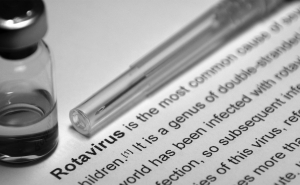
Rotavirus the Leading Cause of Diarrheal Deaths Among Children Under 5, New Analysis Finds
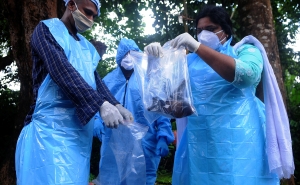
Outbreak Preparedness for All

Peter Agre’s Third Act
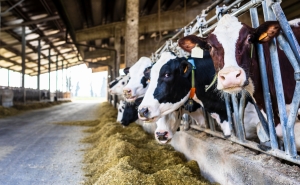
What’s Happening With Dairy Cows and Bird Flu

Decisive Action Needed to Stop Cervical Cancer Deaths
Need help organizing for summer? We tapped 'The Home Edit' stars for their recommendations
- TODAY Plaza
- Share this —

- Watch Full Episodes
- Read With Jenna
- Inspirational
- Relationships
- TODAY Table
- Newsletters
- Start TODAY
- Shop TODAY Awards
- Citi Concert Series
- Listen All Day
Follow today
More Brands
- On The Show
The day I returned home after being kidnapped by Islamic terrorists

Beth Rodden is a professional rock climber who, along with three other climbers, was kidnapped and held hostage by Islamic militants in 2000 while on a climbing trip in Kyrgyzstan. The following is excerpted from her new memoir, “A Light Through the Cracks,” about the day she returned home to the U.S.
Amsterdam, August 2000
By the time my boyfriend, Tommy Caldwell, and I made it to Amsterdam’s gleaming, sterile airport, we had been passed along a half dozen times, like an important but increasingly well-worn package. Military helicopters had brought us and our other two climbing partners from base to base. We’d endured a surreal ride on a private jet from the last military base to the capital, Bishkek, traveling alongside the tipsy and jovial president of Kyrgyzstan. He’d patted us on the shoulders like a grandfather and claimed us long enough for a photo op and a speech to local media in a language we couldn’t understand. Then he handed the four of us off to the American embassy, which scrambled to find us flights home. A few days later, Tommy and I drove across the Kazakhstan border, in a hired car with a diplomatic escort, to the international airport in Almaty, and finally a commercial jet took us from Central Asia to the edge of the Atlantic. Now we had just one more flight to go.
Our tickets were a last-minute mess, and we needed to check on our connection. As we crossed the terminal, I carried a brown paper gift bag from the airport candy shop — despite what we’d been through, I still wanted to bring my older brother a present from this trip. I watched the families clustered around the gates, the lone business travelers perched at the bars, scanning each face around me. I’d been on edge through practically every step of the journey: The embassy in Bishkek had felt almost safe, but at the hotel where they’d sent us to get some sleep, I’d felt vulnerable and stayed vigilant.
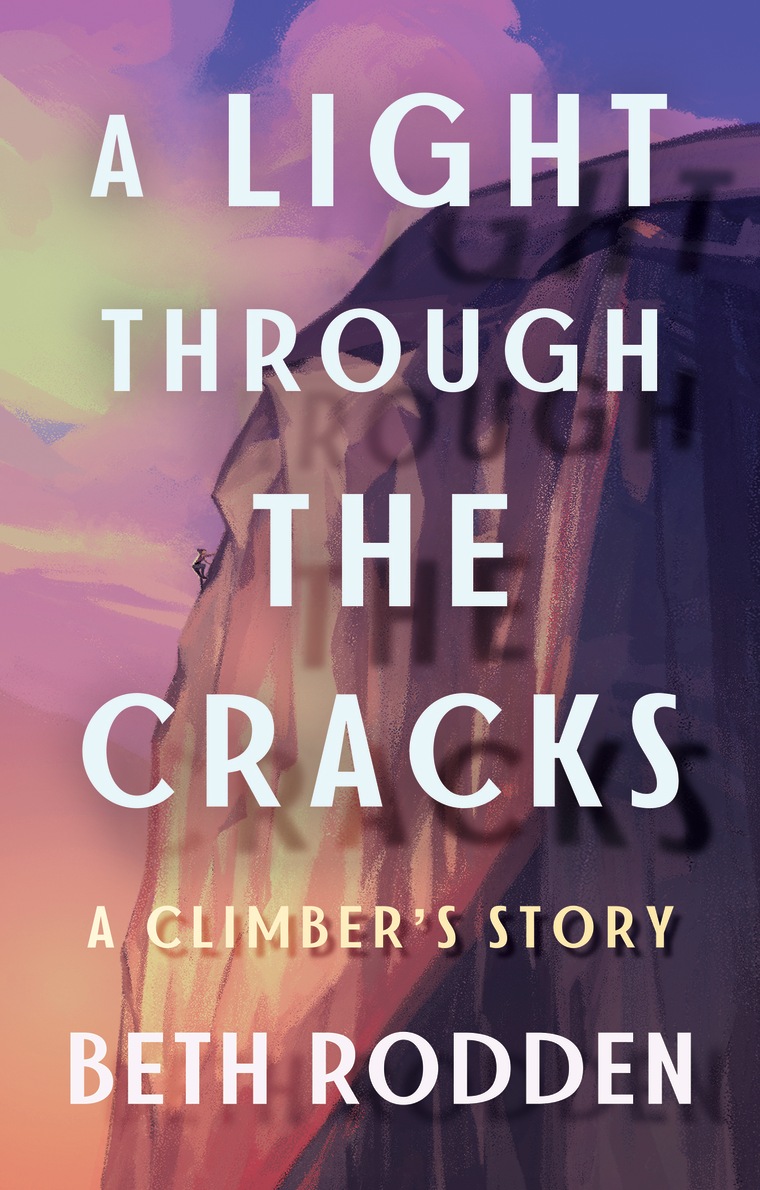
In the airport, I was hungry again. When we’d made it to the second army base, the one that felt like a cluster of portable classrooms set down on a vast brown plain, we’d stuffed ourselves with barley and warm buttered bread, but I could not stay full. I had just eaten two chocolate croissants. Still, my stomach felt like a cavern. My brother didn’t really need a present, did he?
I ate half the chocolate in the bag before we got to our gate.
The line at the KLM Royal Dutch Airlines counter felt so orderly. The whole airport did. Just existing there felt like getting a big, soothing hug. When we’d boarded the flight in Kazakhstan, the passengers had formed no line. Everybody just pushed in a scrum toward the plane. Tommy and I stood frozen, like the good, shocked scouts that we were, and got lost in the flood. I felt so fragile, so extremely fragile, and so resigned to that fragile state.
We weren’t safe. That was obvious to me. No line, no order, no rule of law. I loved rules. People smoked openly on that first plane.
“Next,” the flight attendant said as we arrived at the counter. Her voice was as professionally cheerful as her uniform: light blue skirt, light blue jacket, white blouse underneath.
“We’re here to check in for our flight,” I said.
“Wonderful. May I please have your boarding passes?”
I mumbled something apologetic and handed her a few crumpled, dirty sheets of paper. “I think we have to get our seats and stuff from you.”
She pinched her brow as she read our mess of documents. She typed vigorously. I was sure this meant we weren’t going to make it home.
“Can you wait one second?” she asked, flashing a strained smile. She disappeared behind a wall.
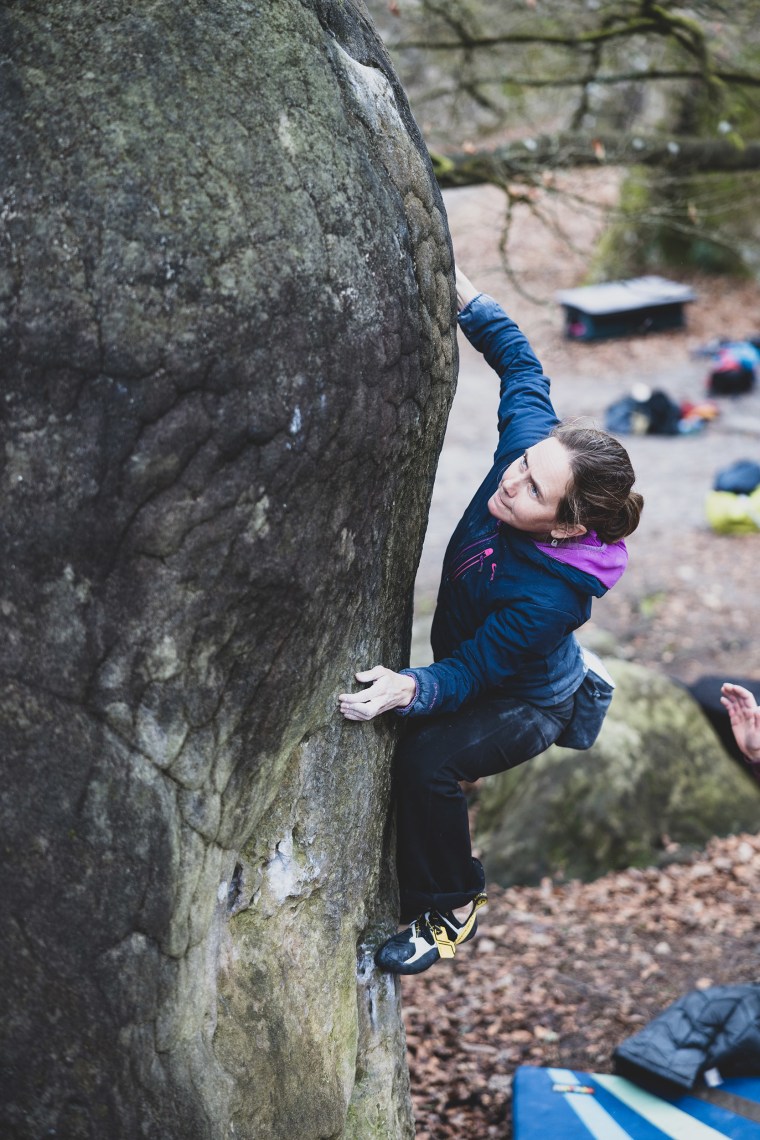
I looked at Tommy. He stared into the blank space where the woman had just been. I couldn’t tell if he was as scared as I was, if he was also monitoring the people pooling and flowing around us for any threat. I felt like I had grown an invisible antenna that vibrated continually, never at rest. Never letting me rest. A memory tried to surface inside me: a body in silhouette, sailing off a dark cliff. A crunch, and an exhale. I forced it back down.
Two blond attendants now appeared where there had been one.
“Can you tell me: Was it something KLM did?” the new flight attendant asked.
I looked back at Tommy. Did he know what she was talking about? Did she know what had happened? Tommy shrugged.
“Wait, what?” I said. “What was something . . . ?”
“Well, um, how to say this,” the flight attendant said. “It says on your tickets, ‘Emotionally distressed passengers, please take care.’ So, we are just wondering if it’s something KLM did.” She looked concerned and defensive in her caring, like a hospital billing manager. She didn’t want to know the answer, but she had to ask.
I didn’t want a stranger to try to comfort me, but I did feel the need to comfort her. So I said, “Oh no, definitely not. We were just kidnapped and we want to go home.”
I couldn’t believe how easily the sentence came out. We were just kidnapped . . . I’d never said it so plainly before.
The flight attendant exhaled all her breath at once, stunned and relieved. “Well, good,” she said.
Well, good?
“KLM does our best. How about business-class seats for you two?” She printed our fresh, flat boarding passes. Tommy and I boarded the plane.
We ate every meal and every snack that was offered to us on the long ride home. My hunger was like a portal opened into a galaxy — infinite, absolute. When I was in middle school, I used to watch my older brother, David, eat, stunned by the mountain of food he could consume. Now, it felt strangely freeing to eat with that type of abandon. I hadn’t done that since ninth grade, when I became obsessed with climbing.
I could eat, but I still couldn’t sleep. My anxiety kept me wide awake, and my wakefulness in turn meant I had nothing but space and time for the anxiety to spin itself tighter in my body. I kept wondering if the plane would crash. That seemed possible, maybe even probable, given how the rest of our trip had gone. An appropriate ending, in a way. I wondered if I’d be scared. What would Tommy say to me before impact? Would it hurt? Our backpack, stuffed at our feet, was filled with souvenirs purchased in a blur during our strange interlude in Bishkek, between our flight with the president and our diplomatic drive across the border. I had stuffed the paltry remains of the airport chocolate into our bag alongside the rest of the things we’d acquired: a hand-carved wooden chess set, a wool hanging. Proof that we’d done something major and been somewhere cool. What were we thinking?
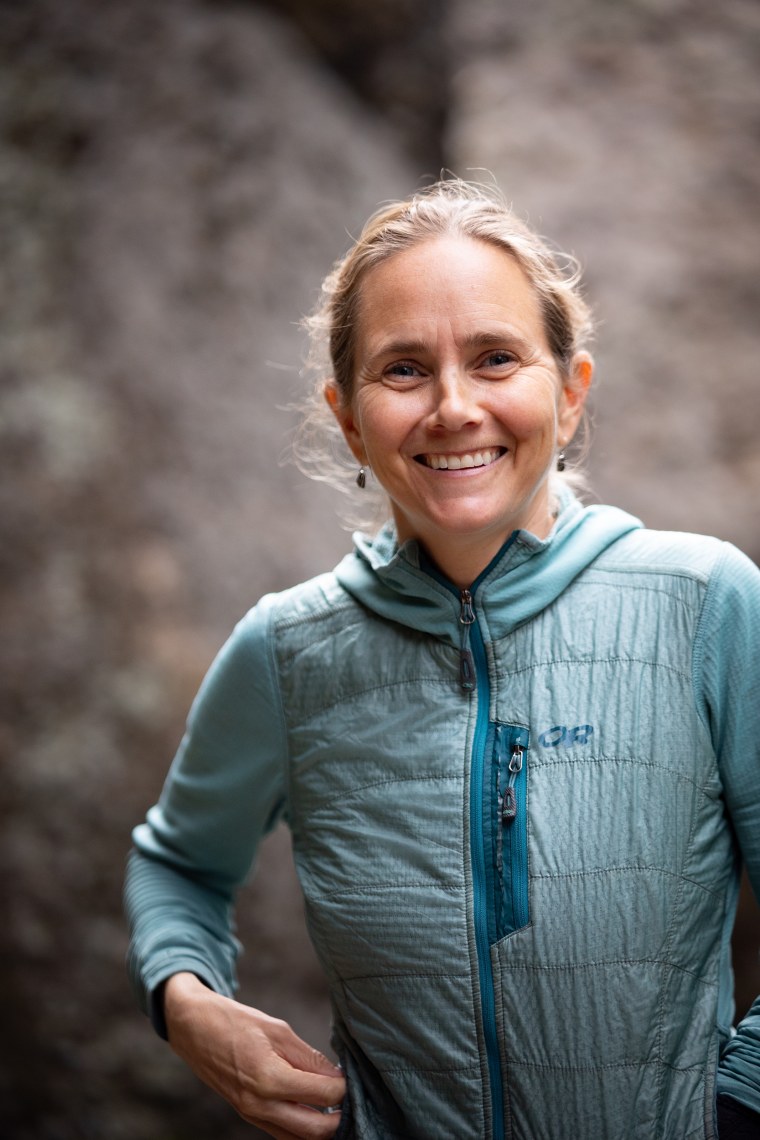
The backpack that sat at our feet had been lost in transit when we’d first landed in Kyrgyzstan, full of hope for our climbing adventure, and was waiting for us, perversely intact, at the hotel in Bishkek after our escape. We’d left San Francisco with 20 expedition duffels, and all I had left was this backpack filled with trinkets from a country to which I’d never return. Maybe that was why we’d bought them, with the money Tommy had wadded up in his sock just before we were marched away from our camp at gunpoint. Maybe it was some attempt to fabricate a decent memory of the place.
My hands trembled the whole 12 hours to San Francisco. I knew I needed sleep, but if the plane did crash, wasn’t I supposed to be awake for that? I had no idea how to act, what to do or say or who to be when we saw our parents. I’d left as a 20-year-old girl full of herself, ready for the world, sure I was doing something extraordinary. I was living out the dream I’d stared at in the posters I hung on my bedroom wall: climbing to incredible heights in far-off places. My mother had hardly traveled, certainly not by my age. I’d felt so awfully superior as I’d walked down the jetway when we left. I didn’t even turn back to wave.
My parents had given me everything — pride, freedom, confidence. They trusted me. They trusted my decisions. They trusted the world. Now I was returning home a broken mess. I’d spoken to them a few times from the embassy in Bishkek, the words mainly drowned in my tears. I wanted to be small again, so small I could crawl through the phone into their arms, where they’d hold me and shush me and stroke my head. I wanted my mother to say, “Mama’s here, Mama’s here,” just like she always did when I was a girl. I wanted to shrink back into that little-girl body and lay my head in her lap and cry.
How was I supposed to carry myself getting off the jetway? Was the idea to act strong, like I was fine? I was weirdly good at that. Or should I literally run into their arms?
Now — how to do this? How was I supposed to carry myself getting off the jetway? Was the idea to act strong, like I was fine? I was weirdly good at that. Or should I literally run into their arms, like I had been dreaming of doing for the past eight days? I’d never spoken easily with my parents about feelings. They were so kind, so present, and gently but firmly on my team. But inside, I always felt nervous, like there was a line I was afraid to cross, like I needed to be tougher, solid, unbreakable. And even if I could lay my head in my mother’s lap and have her say, “Mama’s here,” would that still work to soothe me? I was not the same person I had been when I left. My thoughts flapped like the loose end of a film in an old-fashioned movie projector, the front reel spinning empty.
I looked over at Tommy. Maybe he’d know what to do. His head was slumped at a 45-degree angle to his chest, his mouth dropped open, snoring. He was sick. His brain was more lucid and less spastic than mine, but his body was breaking down. He had a fever. I envied Tommy’s oblivion. I felt so alone.
We landed. My palms were sweating, but Tommy’s hands felt strong. That felt like a plan: I’d hold his strong hand and we’d present a united front, though I hadn’t told him about my looping, flapping mind. I was trying to stay composed — for him, for me, maybe for my parents too. We collected our bag of souvenirs from under the airplane seats. The souvenirs promised our trip was normal. We were normal. I grabbed a free chocolate bar and a package of cookies from the plane’s galley as we exited. I never did anything like that, but now instead of saying, “Don’t eat that, Rodden,” I thought, “Just in case we don’t have any other food.”
I didn’t race off the plane like I had seen people do in movies, straight into their loved ones’ arms. Instead I walked so slowly that other passengers started passing us. I was desperate to return home, to the narrow twin bed in my parents’ house, on our quiet block filled with minivans and white Honda sedans, to replant myself in the flat farmland around Davis, California, to recommit to the safe wide sidewalks. I just didn’t know how. I wondered if people could tell we’d changed: if we walked differently or stood slightly less straight, if we’d absorbed so much fear and terror that we now emitted it.
Excerpted from “A Light Through the Cracks: A Climber’s Story,” by Beth Rodden. © 2024 Published by Little A Books, May 1, 2024. All Rights Reserved.
Beth Rodden is the author of “A Light Through the Cracks: A Climber’s Story,” out May 2024.

I ran away from a troubled teen program and escaped for good. This is my story

No one wants the family spinning wheel. So why is it so hard to get rid of?

How my (many) wedding superstitions saved my marriage

Can you get better at small talk? Here's what happened when I tried to

I did my own makeup on my wedding day. Here’s how it went

Why I’m happy to be my husband’s second wife

I got a psychic reading 3 months after losing my dad. How it helped me heal

I was 1 of millions who traveled for the eclipse. Here's how it went

My fiancé is 17 years older than me and I’m sick of the age-gap conversation
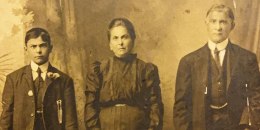
Author Jo Piazza: How a 100-year-old family murder mystery inspired my new novel

IMAGES
VIDEO
COMMENTS
The family practices framework roots our understanding of wha t family is in everyday expectations. and behaviours, and thereby connects the abstract concep t to the way it is used by social ...
In the human perspective, a family is a group of persons connected by kinship, compassion, or sharing of residence. In a number of societies, the family is the basic unit for the socialization of children. A basic family unit is made up of a father, mother, and children, and is known as a nuclear family, however, this unit can be extended to ...
Here are some easy-to-follow tips from our essay service experts:. Focus on a Specific Aspect: Instead of a broad overview, delve into a specific angle that piques your interest, such as exploring how birth order influences sibling dynamics or examining the evolving role of grandparents in modern families. Share Personal Anecdotes: Start your family essay introduction with a personal touch by ...
riage and the family, families not only survive but continue to change and evolve. Family structures may vary around the world, and yet, the value of our . family. endures. Families are the basic, foundational social units in all hu-man communities around the world, and healthy individuals within healthy families are at the core of a healthy ...
the most satisfying family lives and communicative experiences. In addition, many groups or agencies (governmental and religious) attempt to weigh in on issues relevant to family life, and debates abound regarding what type of family form is best (for children and adults) and what types of families should be recognized legally (or not).
This perspective takes a dynamic approach to defining familial relationships by focusing attention on. emotional attachments and pa tterns of interacting. Viewed through a role lens, relationships ...
The family has a function in most societies of regulating sexual conduct, but although important this is not an essential function of all family systems. In one study of 250 societies it was found that sixty-five allowed unmarried and unrelated people complete sexual freedom; so even if ...
Families are usually formed in one of three ways: (1) bio-. logically, thr ough having a blood connection; (2) legally, through. marr iage and related forms of State recognition such as adoption ...
The family system is a basic unit of society that has evolved along with changes in the needs and demands of the individuals and society (Kozlowska &Hanney, 2002). As the smallest social unit of society, the family has been instrumental to the development of cultures and nations. The extended family was the first social unit in the nomadic ...
Three studies were undertaken to gain a better understanding of laypeople's concept of family. Study 1 indicates that people have central features and attributes that they ascribe to the concept of family. Study 2 likewise reveals that certain forms of family are considered more exemplary than others. Study 3 brings the elements of features and ...
A family is a group of people who are related by blood or heritage. These people are linked not only by blood but also by compassion, love, and support. A person's character and personality are shaped by his or her family. There are various forms of families in today's society. It is further subdivided into a tight and extended family ...
In the last three decades, several strands of research have produced compelling evidence justifying a focus on the family with a particular emphasis on early years in order to raise literacy standards. The key research findings are: Families and parents are critical to children's attainment.
In this module, we concentrate on marriage and family customs involving at least one man and one woman because although homosexual behavior is not rare, same-sex marriage is rare cross-culturally. As discussed in the sexuality module, homosexual behavior, even if common, often coexists with heterosexual marriage practices.
importantly, taming—"the family", reproductive power can be made docile and put to work under larger systems of labour power. By attending to the ways in which reproductive practices and family life come under scrutiny, surveillance and control, we can start to track how family regulation is put to work under neoliberalism.
family, a group of persons united by the ties of marriage, blood, or adoption, constituting a single household and interacting with each other in their respective social positions, usually those of spouses, parents, children, and siblings. The family group should be distinguished from a household, which may include boarders and roomers sharing ...
ESSAYS ON EDUCATION AND THE FAMILY Tamara Jane McGavock, Ph.D. Cornell University 2016 This dissertation explores issues related to children's schooling and well-being in Africa and Asia. Using household level data, I empirically assess the ef-fectiveness of a policy that raised the minimum age of marriage for girls in
States (C.C.F.E., Family Services Canada, and C.F.L.E., National Council on Family Relations), he is committed to the promotion of family life education. He is currently involved in numerous research projects, such as premarital rituals, computers and family life, the use of theater in sexuality education, and moral philosophy in family science.
Family involvement is important for young children's literacy and math skills. The ma-jority of studies, including some randomized control trials (RCTs), demonstrate this positive link. A few studies show positive relations with social-emotional skills. The weakest asso-ciation was between family involvement at school and chi ldren's ...
The family is the fundamental unit in social hierarchy. It is where parents and their children live together. In many cases, grand, or even great grandparents live in a family with their children, and grandchildren. The family provides the basic physical and psychological environment within
Essay Writing #2 - My Family (Grades 5-6) Please write about a member of your family. Describe how you picture him or her and how you feel about him or her. Here are some questions you might ask yourself: • What does this person look like? • What work does he or she do?
500+ Words Essay on My Family. Families are an integral part of one's life. It does not matter if you have a small or big family, as long as you have one. A family serves as the first school to the child where one learns about various things. The basic knowledge about one's culture and identity comes from their family only.
A family is God's greatest gift to all living beings on earth including human beings. A person without family and its love is never complete and happy. A family is one with whom you can share all your joys and sorrows. Family stands by you at the toughest situations in life. Family gives you the warmth and affection that you may not get ...
in an essay appear in ____ . a the introduction b the body paragraphs c the conclusion 11 Most essays in high school and college are about ____ long. a three paragraphs b five to ten paragraphs c five to ten pages 12 When you write an academic essay, your audience is usually ____. a yourself b your friends and family c your teacher and ...
same-sex couple in NSW to adopt. This granted same-sex couples the same entitlements and responsibilities as heterosexual couples, effectively ensuring fairness. Regardless of sexual orientation, determining a suitable family environment for a child should be according to a person's/couples individual merits as a parent. The article titled "Foster child adoption rates at record highs in NSW ...
I'm 38 and single, and I recently realized I want a child. I'm terrified I've missed my opportunity. The author. Courtesy of the author. I didn't want kids and didn't think I'd want to get married ...
Neal Katyal writes that American jurisprudence and civic participation would be enhanced by the allowance of cameras in courtrooms to record and then broadcast proceedings there.
The Saturday Essay. Solving the Cancer Mystery That Devastated My Family For decades, Lawrence Ingrassia wondered why so many of his loved ones got cancer. Then a team of dedicated researchers ...
KP.2 is one of several variants being referred to as "FLiRT variants," named after the technical names for their mutations. The prevalence of these variants comes at a critical time, when experts are deciding how to formulate the fall COVID vaccine. In this Q&A, Andy Pekosz, PhD, a professor in Molecular Microbiology and Immunology ...
Courtesy John Dickey. Beth Rodden is a professional rock climber who, along with three other climbers, was kidnapped and held hostage by Islamic militants in 2000 while on a climbing trip in ...